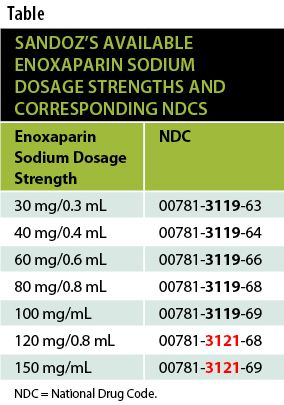Prescriber-Patient-Pharmacist Communication
Changes to a patient's medication can have potentially devastating consequences if all parties involved are not properly informed.
Changes to a patient's medication can have potentially devastating consequences if all parties involved are not properly informed.
Lack of Communication Can Be Fatal
A woman with a high-risk pregnancy was switched from the anticoagulant Lovenox (enoxaparin sodium) to heparin 5000 units subcutaneously twice a day. The prescriber never contacted the pharmacy directly about the switch in therapy. Lovenox is available in prefilled syringes, but the heparin was ordered as a vial, which required the patient to use a separate syringe to prepare and administer the dose.
The patient brought prescriptions for both the heparin and the syringes to her neighborhood pharmacy. The patient’s husband returned the next day and picked up the heparin and the syringes. When the patient went to draw up the heparin, she noticed that the pharmacy had given her insulin syringes marked in 10 unit increments from 10 units to 100 units. The prescription label instructed the patient to administer 5000 units.
Luckily, this patient was a nurse and realized the pharmacy had dispensed insulin syringes rather than syringes marked in milliliter (mL) increments. The heparin concentration was 5000 units/mL and there was a 1-mL marking on the insulin syringe, which allowed the patient to selfadminister the prescribed dose of heparin. However, if the patient had not been a health care professional or aware of the incorrect syringe, she could have possibly administered several syringes using the 100 units mark to receive her dose, which could have led to a fatal medication error.

This error highlights the need for clear and complete communication between the prescriber, the patient, and the pharmacist. Prescribers, especially when ordering high-alert medications like heparin, should communicate with the pharmacy when a patient’s therapy may change, due to the fact that, as in this case, the patient may now be drawing up doses of the medication. This will allow the pharmacy the opportunity to inform the prescriber whether or not the needed medications and administration devices are available.
The pharmacist must also communicate directly with the patient and/or prescriber to ensure that the prescribed therapy is fully understood. Prescribers and pharmacists should utilize the “teach-back” method, which includes a repeat demonstration by the patient, to educate the patient about the items required for drug administration and how to use them. It should never be assumed that any patient knows the proper procedures for subcutaneous administration of any medication.
Full NDC Check Needed for Enoxaparin Syringes
The Institute for Safe Medication Practices (ISMP) has received a number of reports expressing concern that the different dosage strengths of enoxaparin sodium prefilledsyringes, manufactured by Sandoz, share the same middle 4 digits, or product code, in the National Drug Code (NDC) numbers (Table). Sandoz uses different package codes, the last 2 digits of the NDC numbers, to differentiate the dosage strength. (Note: sanofi-aventis assigns different product and package codes to its Lovenox [enoxaparin sodium] brand syringes.) This degree of similarity in the NDC numbers increases the risks of mixups, as many pharmacists rely on a manual check of the NDC number, especially the middle 4 digits, during final verification. ISMP has notified the FDA of this issue.
Until a solution is reached, standardize the manual check process to verify the entire 11-digit NDC number, not just the middle 4 digits. Make sure to use the original prescription, or an image of it, during the final verification to check the drug concentration or strength. Computer alert messaging such as “Stop and check NDC” at data entry and final verification may be helpful. PT
Dr. Gaunt is a medication safety analyst and the editor of ISMP Medication Safety Alert! Community/ Ambulatory Care Edition.

